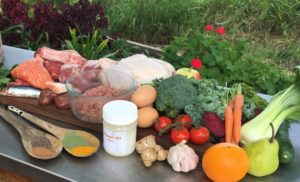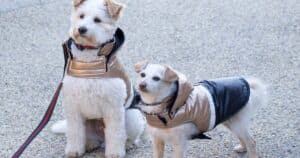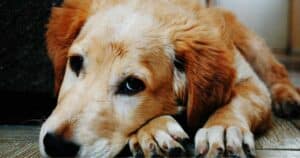
Whilst humans benefit from eating a variety of foods, a dog’s digestive system is very different to ours and some can have even more sensitive stomachs that others. As a result, changing a dog’s diet suddenly can cause upset stomachs leading to vomiting and diarrhoea, which is definitely NOT something you want to be dealing with at any time, let along on a road trip or RV holiday!
When transitioning your dog to a new diet, it simply means you start with with introducing small amounts of the new food with the previous food, then slowly increasing the new and decreasing the old to help avoid the stomach upsets. Particularly if want to change a dog’s diet from dry kibble to a raw food diet, which can take up to 14days to do safely. o
Regardless of whether you are simply changing them across to a new brand of the same type of food, or introducing wet or raw food into their diet for the first time from kibble, or vice versa, it is important to do it slowly.
It will also help to ensure they have the time to get used to any new tastes or textures whilst they are still eating what they are familiar with, and it may also help fussy eaters, or those dogs that aren’t into food that much in general.
When changing your dog’s food, it is also important to make sure you monitor them over this time to make sure they don’t vomit or get diarrhoea. Yep, this means monitoring their stools too to make sure everything is coming out the other end okay. No runny mess, no struggling to go to the toilet, nothing weird or concerning going on. To understand what a healthy dog’s poop should look like, click here.
The common guide for transitioning your dog over to a new diet is:
Day 1-3: 20% New 80% Old
Day 4-6: 40% New 60% Old
Day 7-9: 60% New 40% Old
Day 10-12: 80% New 20% Old
Day 12+: 100% New Diet
It’s also important to make sure you are not over-feeding your dog. You can find out more about this and more tips on transitioning to a raw food diet on the Big Dog Pet Foods website.
If your dog doesn’t seem to like the new food, or they are a fussy eater in general, it could be more to do with what else you are feeding them throughout the day. You could be over-feeding them, giving them too many treats, or you might actually be encouraging them to become fussy.
All too often a dog is actually being rewarded for being fussy by owners that start to worry that their dog isn’t eating enough. They resort to dropping broken up treats into their dog food, giving them different options to entice them to eat such as cheese and chicken on the side, which is actually encouraging them not to eat their normal food, as they start to learn some better options will soon follow! That is how we often reward and therefore reinforce unwanted behaviour in dogs without even realising it.
Instead, simply take their their food away, put it in the fridge and try again later with nothing in between. They will get hungry at some point and start to eat.
To find out more about the benefits of changing a dog’s diet across to a Big Dog Pet Foods raw food diet, click here.
About the Author:
Lara Shannon is a certified dog behaviourist and trainer, pet food nutrition specialist, Executive Producer and Host of Pooches at Play on Channel 10 and editor of Poochesatplay.com. Lara also runs her own dog training business in Melbourne’s Bayside area and is the Author of World of Dogs and Eat, Play, Love Your Dog

Tips for preparing a raw food diet for your pet


Winter safety for dogs – Top Tips


Bladder Stones in Dogs and Cats


Get your paws on Lara Shannon’s best selling books ‘Eat, Play, Love (your dog) and World of Dogs.
Available in Australia, USA, UK and Canada.